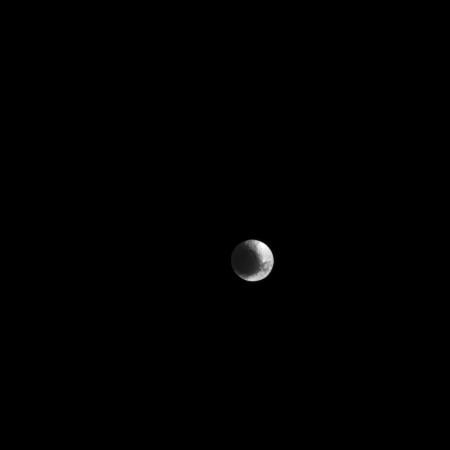
NASA's Cassini spacecraft captured images of Saturn's third largest moon Iapetus while completing its Grand Finale mission.
Also Read: Live stream: NASA's nighttime rocket launch to create colourful clouds in space
Iapetus, the third largest moon of the gas giant planet, has a unique two-toned appearance comprising dark and light regions.
The image of this unique Saturnian moon released by Cassini was taken on March 11. It was captured with the help of its narrow-angle camera, from a distance of approximately 2.6 million kilometres (1.6 million miles), with an image scale of 15 kilometres (9 miles) per pixel.
The photograph portrays "light and dark regions fitting together like cosmic puzzle pieces," a NASA statement revealed.
The mysterious dark region covering Iapetus is known as Cassini Regio and the bright portion of the moon is called Roncevaux Terra
Cassini Regio covers the moon across 1,471 kilometres (914 miles) comprising of a dark, dusty material, which remarkably creates a complete contrast to the brighter region surrounding it, resulting in a two-toned appearance.
The dark matter is believed to be a thin layer and the mystery behind how the area of the moon got its dark matter is still unknown.

According to a hypothesis, the dark material seems to prevail on the moon's surface as an outcome of cyro-vulcanism, which refers to a sputtering of the material from outer moons or remains left by the brighter ice after it undergoes the endothermic process of sublimation.
Another unexplained phenomenon of this Saturnian moon is a 1,300 kilometres (810 miles) long ridge which was captured in an image by the Cassini probe in December 2004. The ridge comprises of mountains which are as high as 20 kilometres (12 miles), it runs along the geographical equator of the moon through the centre of Cassini Regio with its origin being unknown.
The Iapetus moon was discovered in October 1671 by an Italian astronomer named Giovanni Domenico Cassini. The dark region Cassini Regio, which is visible in the image and the name of the Cassini spacecraft, is dubbed in honour of this very Italian astronomer.
The Cassini mission is a cooperative project of NASA, ESA (the European Space Agency) and the Italian Space Agency. The spacecraft's last act is its Grand Finale which is scheduled to end on September 15, 2017, with the help of a controlled fall into the gas giant Saturn's atmosphere.















